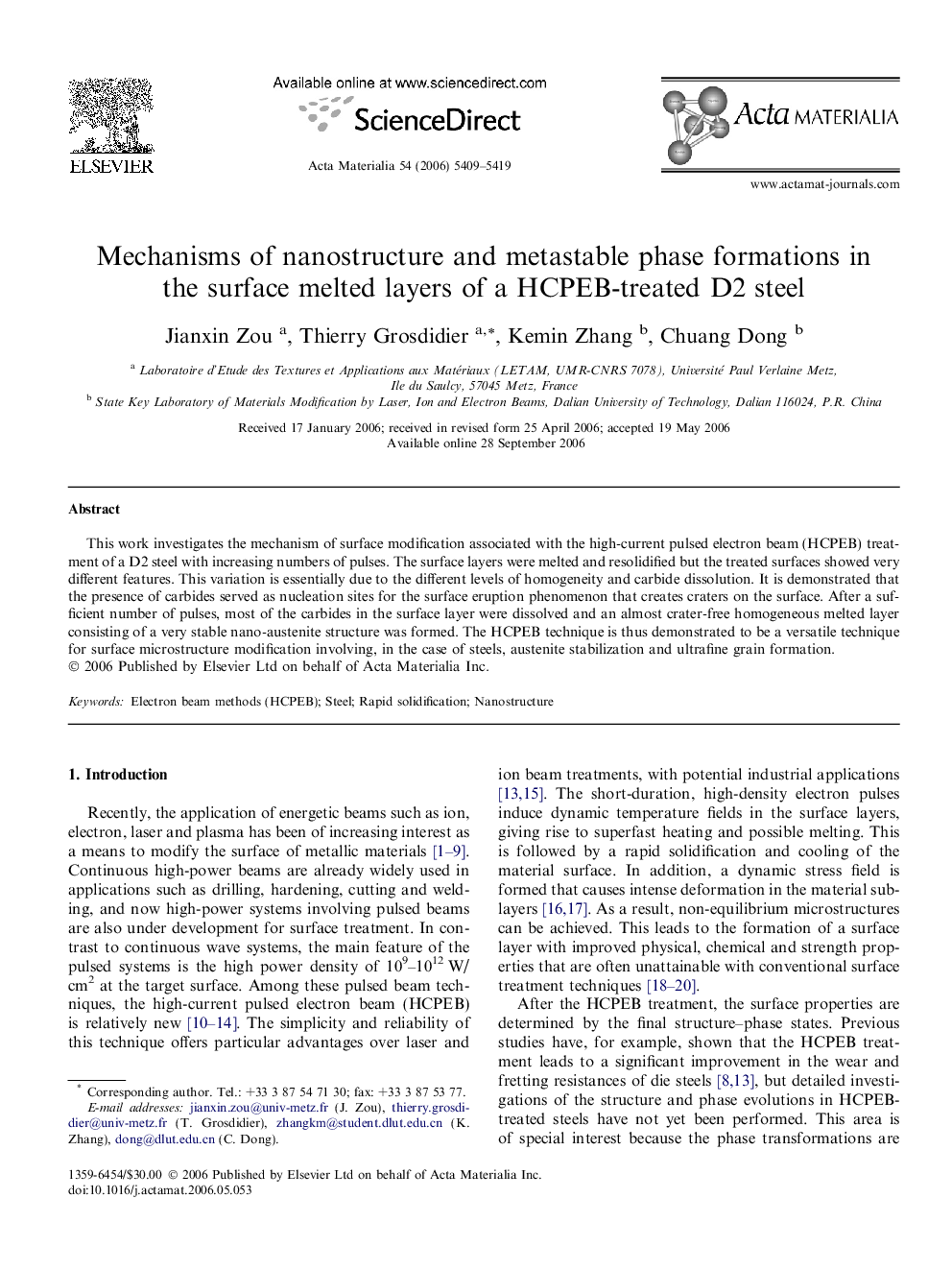| Article ID | Journal | Published Year | Pages | File Type |
|---|---|---|---|---|
| 1450348 | Acta Materialia | 2006 | 11 Pages |
This work investigates the mechanism of surface modification associated with the high-current pulsed electron beam (HCPEB) treatment of a D2 steel with increasing numbers of pulses. The surface layers were melted and resolidified but the treated surfaces showed very different features. This variation is essentially due to the different levels of homogeneity and carbide dissolution. It is demonstrated that the presence of carbides served as nucleation sites for the surface eruption phenomenon that creates craters on the surface. After a sufficient number of pulses, most of the carbides in the surface layer were dissolved and an almost crater-free homogeneous melted layer consisting of a very stable nano-austenite structure was formed. The HCPEB technique is thus demonstrated to be a versatile technique for surface microstructure modification involving, in the case of steels, austenite stabilization and ultrafine grain formation.
